One of our most beautiful native perennials is commonly called “Hairy Beardtongue.” Yes, that’s right: Hairy. Beard. Tongue.
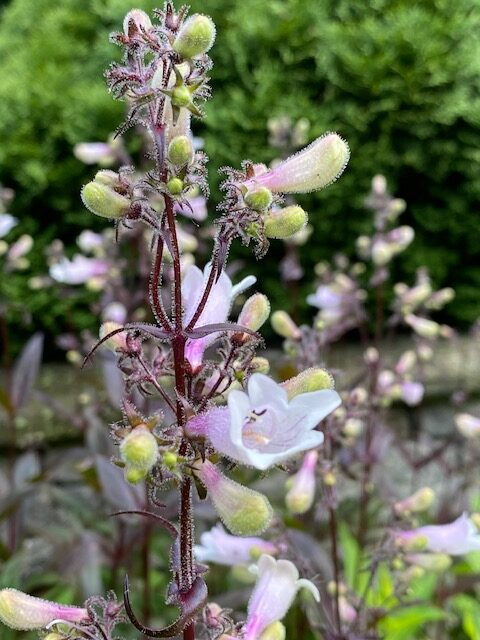
Photo: Travis Brady
While non-native flowers, even the invasive ones, often have charming names like “lily-of-the-valley,” “forget-me-not,” “star-of-Bethlehem,” “Queen Anne’s lace,” and “periwinkle,” many of our most beautiful native perennials are tagged with ugly names like “sneezeweed,” “snakeroot,” “milkweed,” “tickseed,” “spiderwort,” and “bloodroot.” Even in that list, the awful name “Hairy Beardtongue” is the loser! We need a rebranding campaign!
But until then, we can stick with scientific names — especially for the beautiful Penstemon genus, a large and varied family of native perennials.
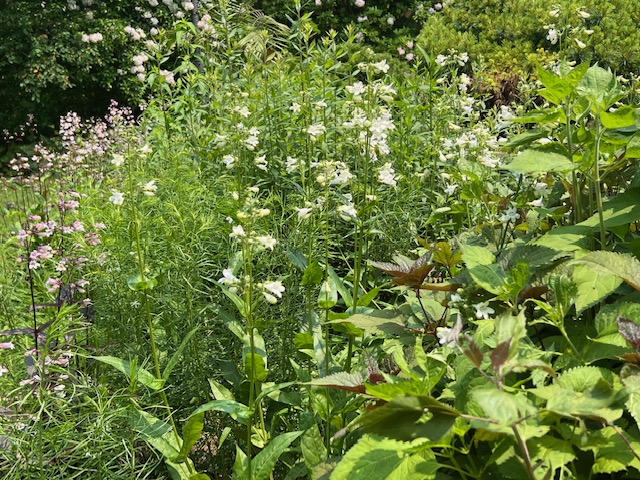
The shape of the flowers explains why most Penstemon species are stuck with “Beardtongue” as part of their common names: Rock Beardtongue, Firecracker Beardtongue, Large-flowered Beardtongue, Rocky Mountain Beardtongue, and many others.
Penstemon flowers typically have 5 petals fused together at the top to form a nectar-rich tube. At the open end, two upper petals curve back and three lower petals reach out to provide a landing platform for pollinators. Each flower has 4 fertile stamens bearing pollen, and one infertile stamen, covered with hairy fibers, that rests on the lower lip of the flower. Presumably, that structure is what caused somebody to think of a “bearded tongue.” Why they didn’t think of a “lady’s comb” or “baby bottle brush” instead is a mystery. The scientific name Penstemon comes from the Greek words penta meaning five and stemon meaning thread or stamen. At least that name makes sense.
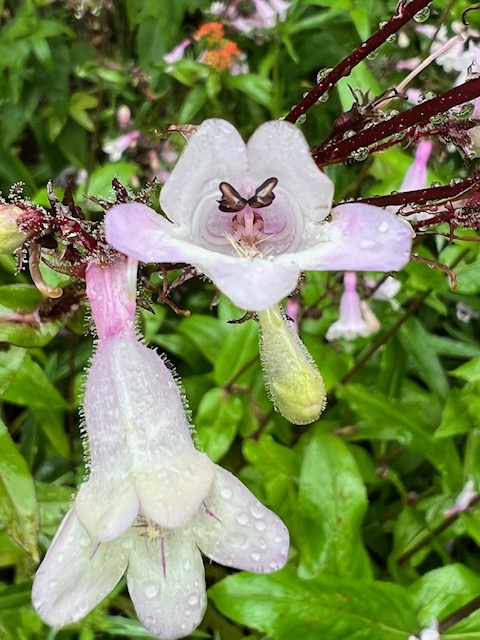
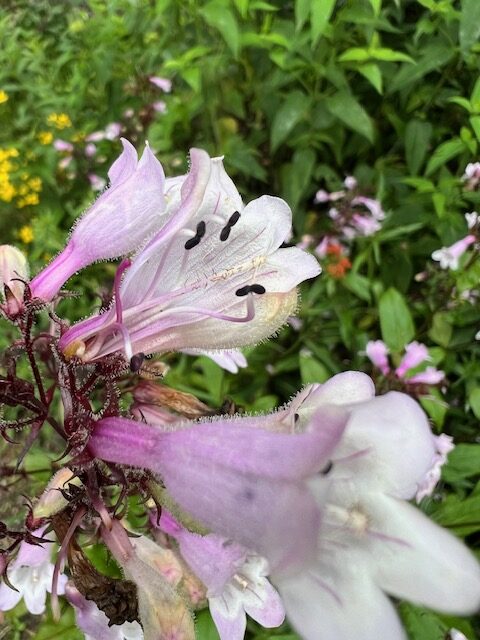
Penstemon is the largest genus of plants native only to North America. There are over 250 different species of Penstemon found from the northern reaches of Canada through the southern tip of Mexico. The largest number and variety of these species are native to the mountains and deserts of Central and Western North America. They all have major value to insects and birds, and most of them are very pretty.
In the Northeastern US, there are two species of Penstemon that make especially fine garden plants: the aforementioned “Hairy Beardtongue” (Penstemon hirsutus), and the somewhat less disturbingly named “Foxglove Beardtongue” (Penstemon digitalis).
Penstemon hirsutus (the word hirsutus means hairy) is identified by the many very fine hairs lining its stems. It is a wonderful addition to flower gardens: carefree, drought tolerant, deer resistant, and easy to mix with other perennials. The flowers are 12 to 18 inches tall and a soft lavender or pale pink fading to white. Lance-shaped leaves are widely spaced along the stem in opposite pairs so that the stem almost appears to be piercing through them. At ground level, there is a basal rosette, or tight cluster of leaves that remain semi-evergreen in the winter. Penstemon hirsutus is a clump-forming plant that will gradually expand at the base, occasionally spreading by seed, but it is well-behaved in the garden and suitable for smaller spaces.
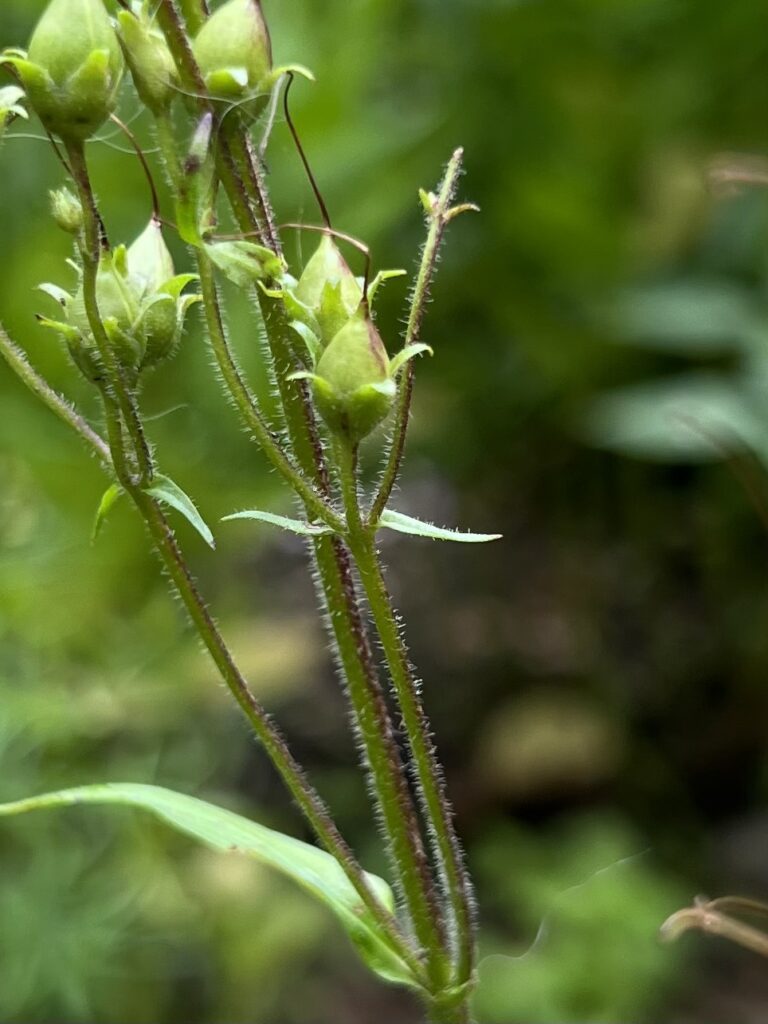
Foxglove Beardtongue (Penstemon digitalis) is named for its vague resemblance to the popular English garden plant, foxglove, and the scientific name digitalis means finger, referring to the fingers of a glove. It grows taller than Penstamon hirsutus, reaching 3 to 4 feet, and has larger mostly-white flowers, with tiny purple stripes on its lower petals as nectar guides for bees. Its native habitat is moist meadows, but it can tolerate stretches of dry weather once established. It survives without any irrigation in the Meadow at the Greenburgh Nature Center and delights visitors in early summer. It can spread itself around more aggressively than P. hirsutus, but is not at all difficult to control. And while its namesake, foxglove, is famously toxic, Penstemon is not. Indigenous people all over North America found medicinal uses for the many species of Penstemon.


Both of these Penstemons bloom for weeks in early summer. They prefer full sun to part shade and are hardy in Zones 3-9. They are not at all fussy about soil conditions and are ideal candidates for low-maintenance pollinator gardens. They are both generally avoided by deer.
Penstemons form interesting seed capsules after pollination and have good fall color. They look great left standing through the winter, providing seeds and shelter for birds, and interesting form and color for gardeners.

A popular cultivar of Penstemon digitalis called ‘Husker Red’ has purple leaves and pinkish, rather than white, flowers. Although the natural species is of more value to insects, ‘Husker Red’ mixes well with both Penstemon species described here, and adds foliage interest to a mixed flower border.
Penstemons are of special value to native bees and are also visited by hummingbirds. Short-tongued bees will sometimes “cheat,” biting through the tubular base of the flower to reach nectar without trading pollination services. Butterflies also are attracted by Penstemon nectar, and the leaves host a number of butterfly and moth caterpillars. Bumble bees love Penstemon! As they burrow in for nectar, the “beard tongue” brushes pollen off of their bodies, aiding pollination of the flowers.
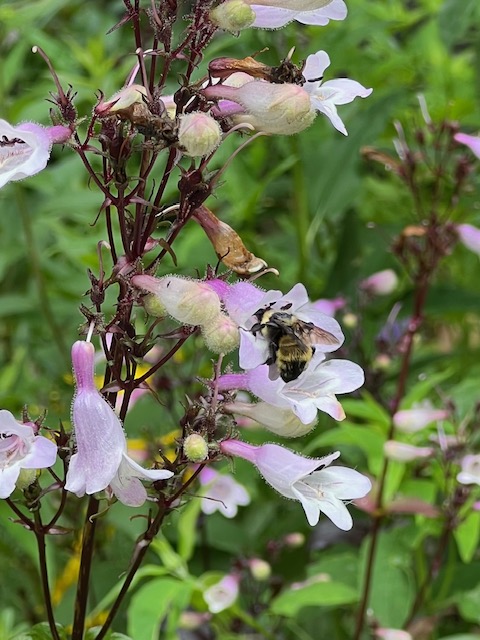
Come to think of it, why don’t we call that fuzzy 5th stamen the “bee-tickler” instead of “beard tongue”? Call the Marketing Department! Let’s re-brand the whole genus and declare that the new common name for Penstemon is “Bee Tickle”!

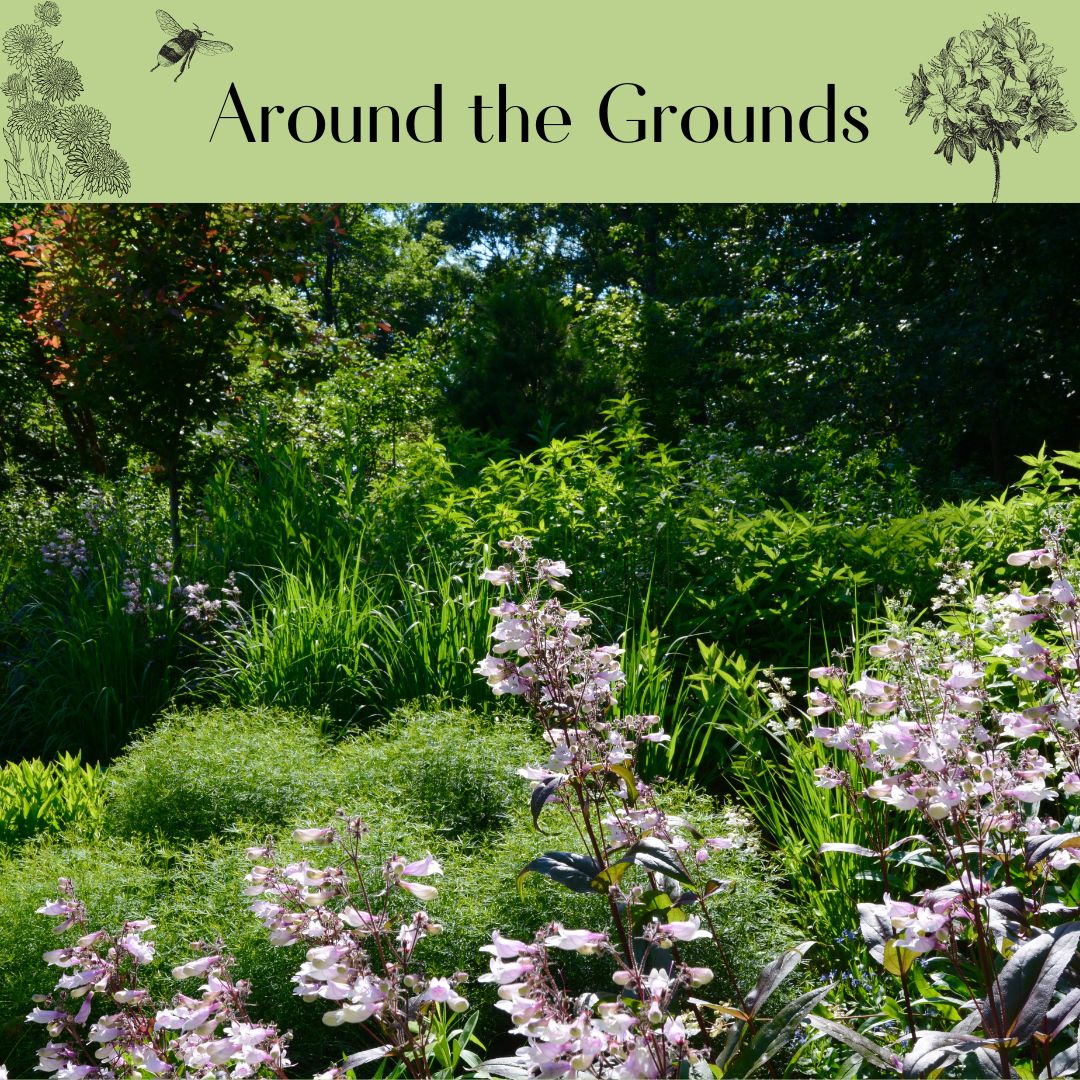
I loves these articles! I learn a lot and appreciate the good writing and good humor.
Thank you so much for the feedback! It makes the effort very rewarding.
Thanks, Tracey! I have Latin binomials rolling around in my brain constantly. I’m not sure I would wish that on anyone! ?
I agree, it is not a pleasant name, but it certainly is beautiful. I definitely prefer it’s scientific name. But how do you keep track of all the scientific names? It seems daunting to me. Thanks for another informative blog!